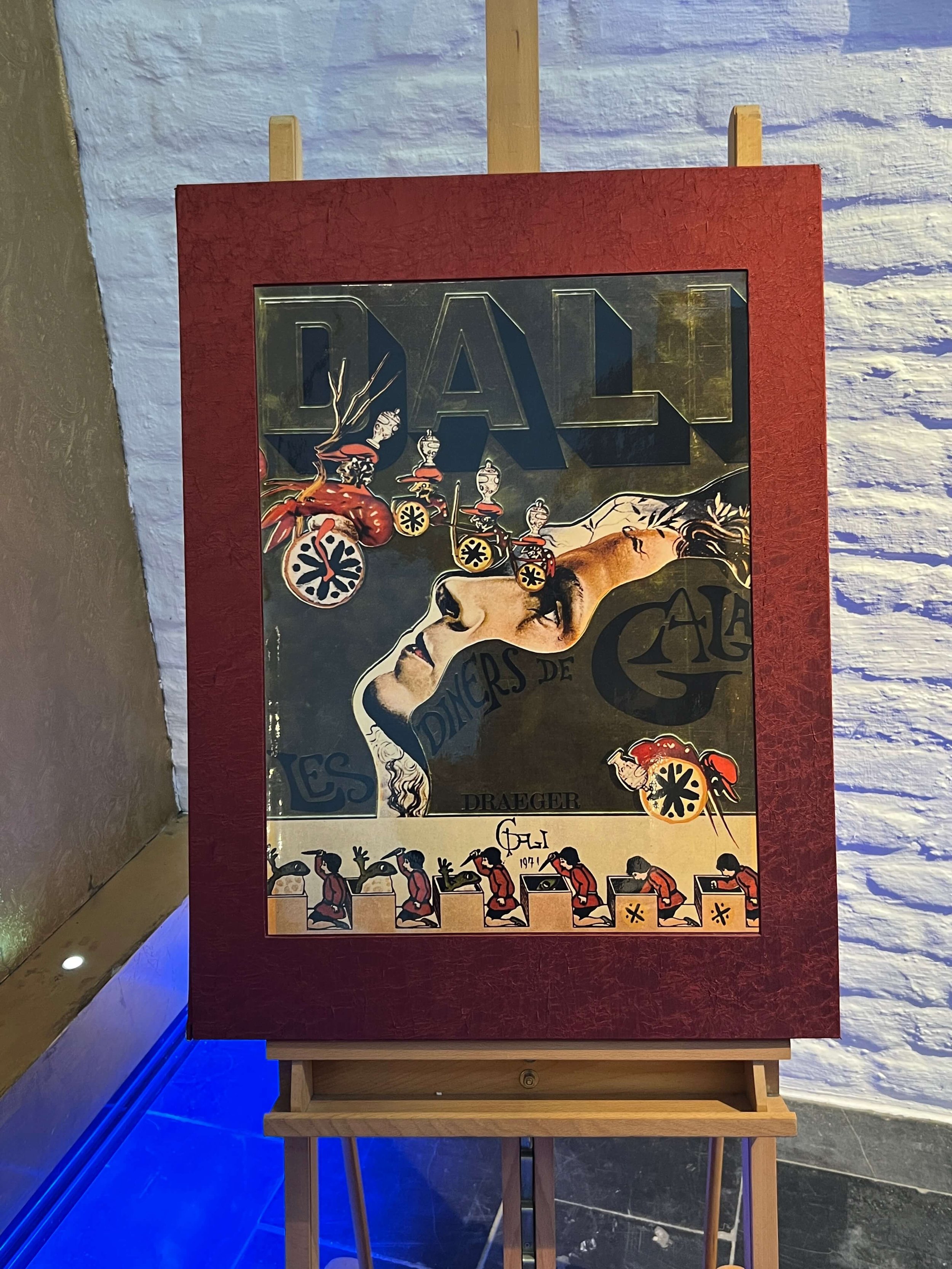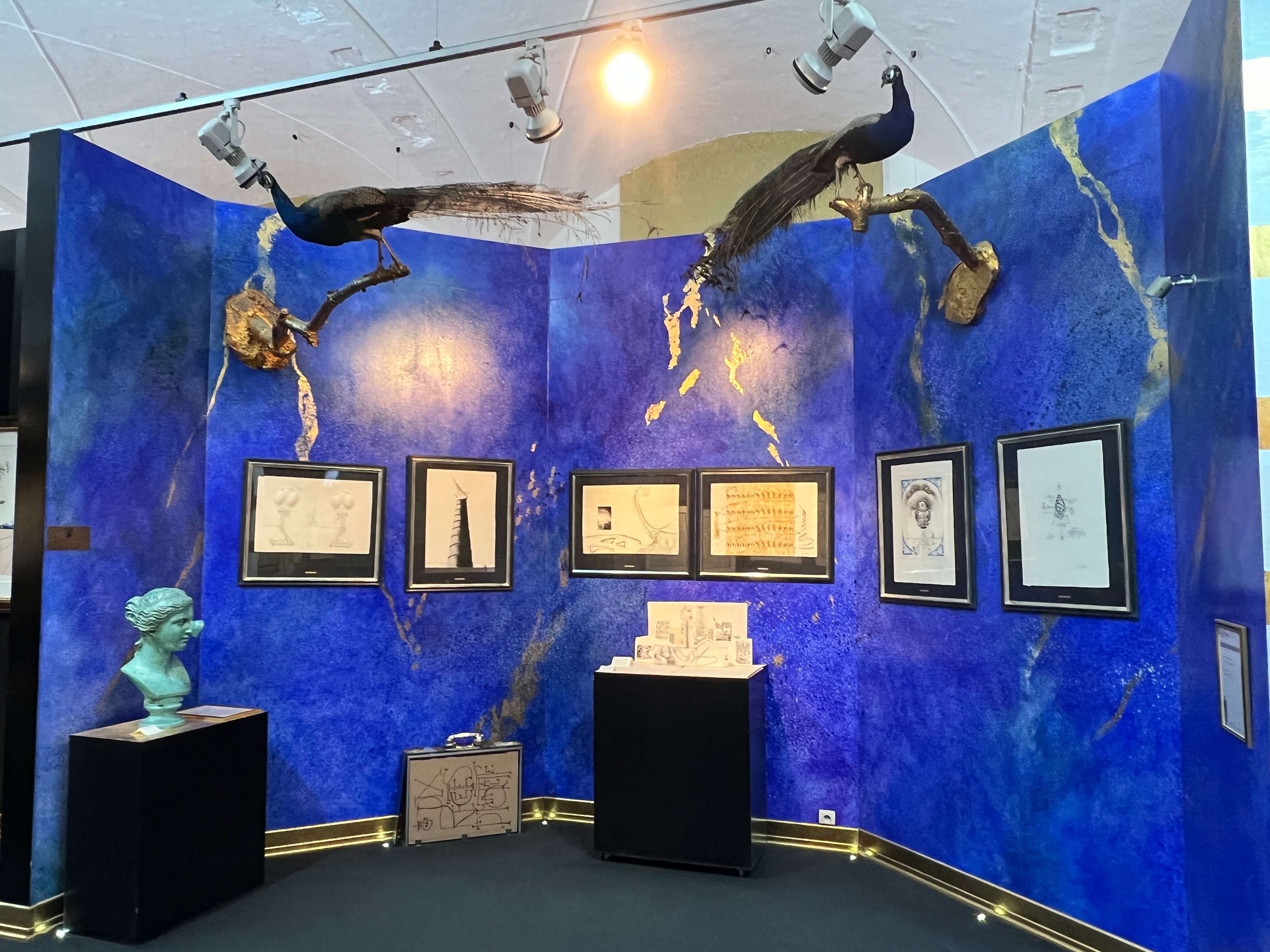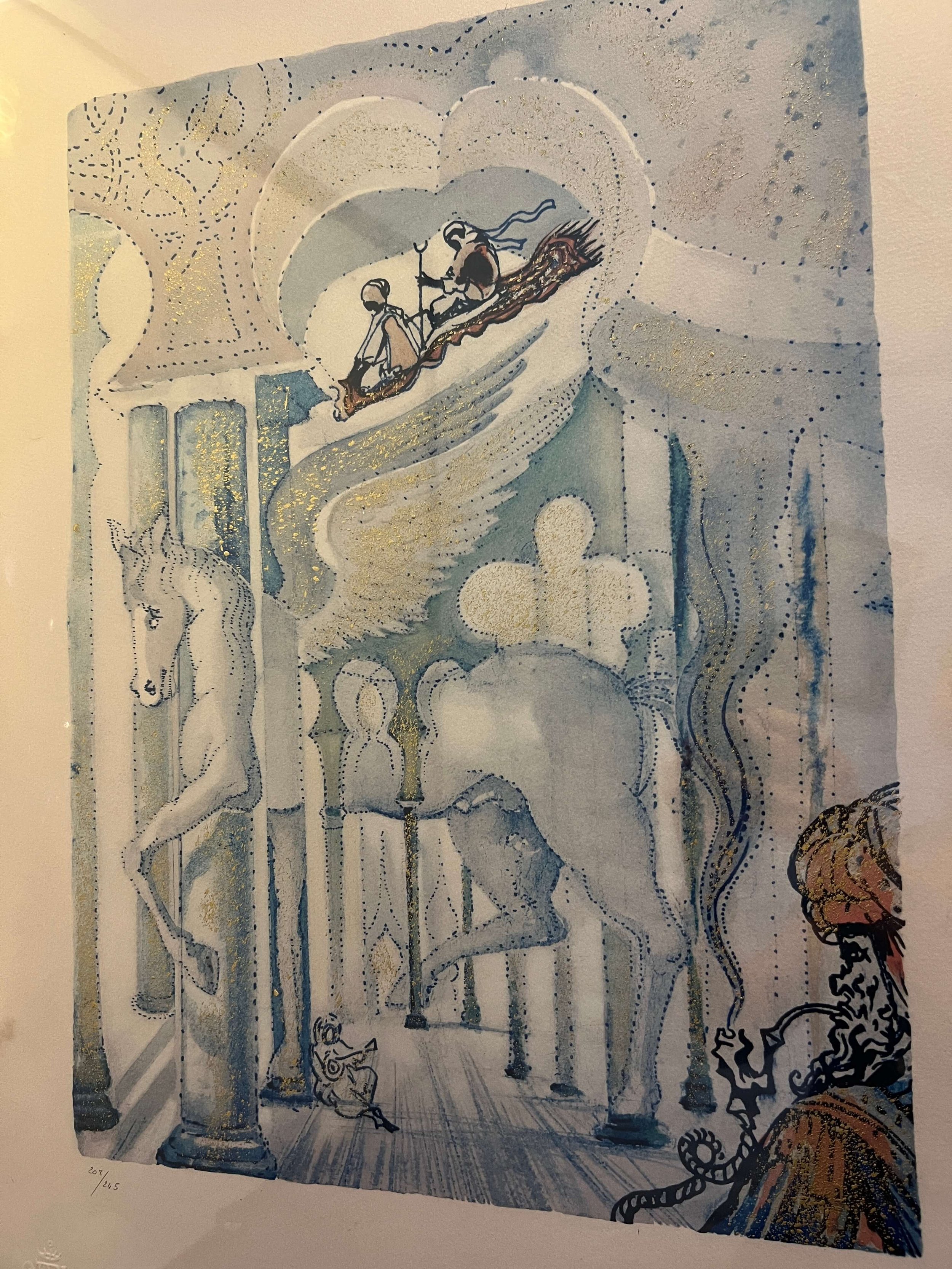Salvador Dali’s Museum of Bruges
Dali’s Museum of Bruges! The exhibition takes place inside the medieval tower of Belfort, which is located in the center of the city.
Belfort Brugge Markt 7, 8000 Brugge, Belgium.
I just happened upon this as I was wandering the Markt, the location struck me as odd because of being placed inside one of the most iconic buildings of Brugges. I went in out of pure curiosity and enjoyed the entire exhibit immensely. It is very well done!
Here is a bit of back story on the artist, and also his muse.
Dalí was born Salvador Felipe Jacinto Dalí y Domenech on May 11, 1904, in Figueres, Spain, located 16 miles from the French border in the foothills of the Pyrenees Mountains. His father, Salvador Dalí y Cusi, was a middle-class lawyer and notary. Dalí's father had a strict disciplinary approach to raising children—a style of child-rearing which contrasted sharply with that of his mother, Felipa Domenech Ferres. She often indulged young Dalí in his art and early eccentricities.
It has been said that young Dalí was a precocious and intelligent child, prone to fits of anger against his parents and schoolmates. Consequently, Dalí was subjected to furious acts of cruelty by more dominant students or his father. The elder Dalí wouldn't tolerate his son's outbursts or eccentricities and punished him severely. Their relationship deteriorated when Dalí was still young, exacerbated by competition between he and his father for Felipa's affection.
Dalí had an older brother, born nine months before him, also named Salvador, who died of gastroenteritis. Later in his life, Dalí often related the story that when he was 5 years old, his parents took him to the grave of his older brother and told him he was his brother's reincarnation. In the metaphysical prose he frequently would refer to this as "[we] resembled each other like two drops of water, but we had different reflections" and “He was probably a first version of myself, but conceived too much in the absolute."
In 1921, Dalí's mother, Felipa, died of breast cancer. Dalí was 16 years old at the time and was devastated by the loss. His father married his deceased wife's sister, which did not endear the younger Dalí any closer to his father, though he respected his aunt. Father and son would battle over many different issues throughout their lives, until the elder Dalí's death.
By 1930, Dalí had become a notorious figure of the Surrealist movement. He was the pioneer of the Paranoiac Critical Transformation Method, a way of perceiving reality in which irrational knowledge stemmed from the state of paranoia and creating a “delirium of interpretation”. Ranging in intensity from merely imagining other shapes within natural ones to even inducing states of paranoia in order to envision the surreal scenes Dali is known for, this method was the creative source of Dali’s surrealist works.
Dali’s “hand painted dream photographs” (a term he uses to describe much of his work), reflects this fluid exchange between the reality of the landscapes and recognizable features in his works, with the displacement of the unfamiliarity of his famous melting clocks and hordes of ants that both symbolize the passing of time.
One of Dalí's most famous paintings produced at this time—and perhaps the best-known Surrealist work—was The Persistence of Memory (1931). The painting, sometimes called Soft Watches, shows melting pocket watches in a landscape setting of Catalan cliffs gleaming golden in the background, a nod to Dali’s own homeland. Dali himself states that the intention of the work, using Paranoiac Critical Transformation Method, was to “systematize confusion and thus help to discredit completely the world of reality”..
By the mid-1930s, Dalí had become as notorious for his colorful personality as his artwork, and, for some art critics, the former was overshadowing the latter. Often sporting an exaggeratedly long mustache, a cape and a walking stick, Dalí's public appearances exhibited some unusual behavior. In 1934, art dealer Julian Levy introduced Dalí to America in a New York exhibition that caused quite a lot of controversy. At a ball held in his honor, Dalí, in characteristic flamboyant style, appeared wearing a glass case across his chest which contained a brassiere.
As war approached in Europe, specifically in Spain, Dalí clashed with members of the Surrealist movement. In a "trial" held in 1934, he was expelled from the group. He had refused to take a stance against Spanish militant Francisco Franco (while Surrealist artists like Luis Buñuel, Picasso and Miró had), but it's unclear whether this directly led to his expulsion. Officially, Dalí was notified that his expulsion was due to repeated "counter-revolutionary activity involving the celebration of fascism under Adolf Hitler." It is also likely that members of the movement were aghast at some of Dalí's public antics. However, some art historians believe that his expulsion had been driven more by his feud with Surrealist leader André Breton.
Despite his expulsion from the movement, Dalí continued to participate in several international Surrealist exhibitions into the 1940s. At the opening of the London Surrealist exhibition in 1936, he delivered a lecture titled "Fantomes paranoiaques athentiques" ("Authentic paranoid ghosts") while dressed in a wetsuit, carrying a billiard cue and walking a pair of Russian wolfhounds. He later said that his attire was a depiction of "plunging into the depths" of the human mind.
During World War II, Dalí and his wife moved to the United States. They remained there until 1948, when they moved back to his beloved Catalonia. These were important years for Dalí. The Metropolitan Museum of Modern Art in New York gave him his own retrospective exhibit in 1941. This was followed by the publication of his autobiography, The Secret Life of Salvador Dalí (1942). Also during this time, Dalí's focus moved away from Surrealism and into his classical period. His feud with members of the Surrealist movement continued, but Dalí seemed undaunted. His ever-expanding mind had ventured into new subjects.
DALÍ AND GALA
Elena Ivanova Diakonova, known as Gala, was a Russian woman, born in Kazan in 1894. She was a woman of unconventional beauty, but with great charm and remarkable intelligence. She is an important character in the life of the Catalan painter, because the two were connected by an overwhelming love. The woman spent her childhood in Moscow, until her university studies. Due to a health problem she was sent to a sanatorium in Switzerland where she met the french poet Paul Éluard. The two fell in love, they married, and in 1917 Gala gave birth to her only daughter Cécile. The union was based on the love for literature. In 1920 her husband Éluard, entered the Surrealist movement, and Gala participated with enthusiasm and admiration at the meetings of those intellectuals. 1929 was the year of the meeting between Gala and Dalí in Paris which led to an exciting relationship. With all of this Gala ended her previous marriage, abandoned her daughter to the paternal grandmother, and decided to follow Dalí to Paris. Dalí and Gala got married in a civil marriage in '34 and later in '57 with a religious ceremony.
The obsession the artist had towards Gala, is a fascinating element of the couple, the woman being older than him and with a strong temperament. According to Dalí, Gala was love, obsession, and at the same time madness, and she became the muse of his art. Her figure often recurs in his masterpieces. The artist's father and sister never liked Gala, and that created a lot of conflicts that were never solved over the years. In 1937 Gala managed to play the role of the painter's agent, obtaining many contracts, affecting the artistic production. During their lives they traveled between Europe and the United States, spending summers in Spain in Port Lligat. Gala had several lovers throughout her marital relationship with Dalí, but despite their uniques personalities, the bond that they had established a strange balance, that led them to live together the rest of their lives.
In 1968, the painter bought a castle for Gala in Púbol, and ironically Dalí needed her written permission in order to visit her there. Between 1971 and the early 1980’s, Gala would spend her summers at the castle; regarding the castle as a retreat and would end up spending ever increasing periods of time there. In 1980 Dali retired from painting due to a motor disorder that prevented him from working. Gala died in June 1982, and after this event Dalí decided to retire from public life. Confined to a wheelchair following a house fire, Dali lived out his last few years in relative seclusion. Having had a pacemaker fitted in 1986, Dali could not shake off his heart problems and was hospitalized again in 1988. Whilst there he was visited by King Juan Carlos, a friend and follower of the artist. He would eventually die in 1989 of heart failure and respiratory problems. In a fitting gesture, he remains buried in the crypt below his Theatre-Museum in Figueres.



















































